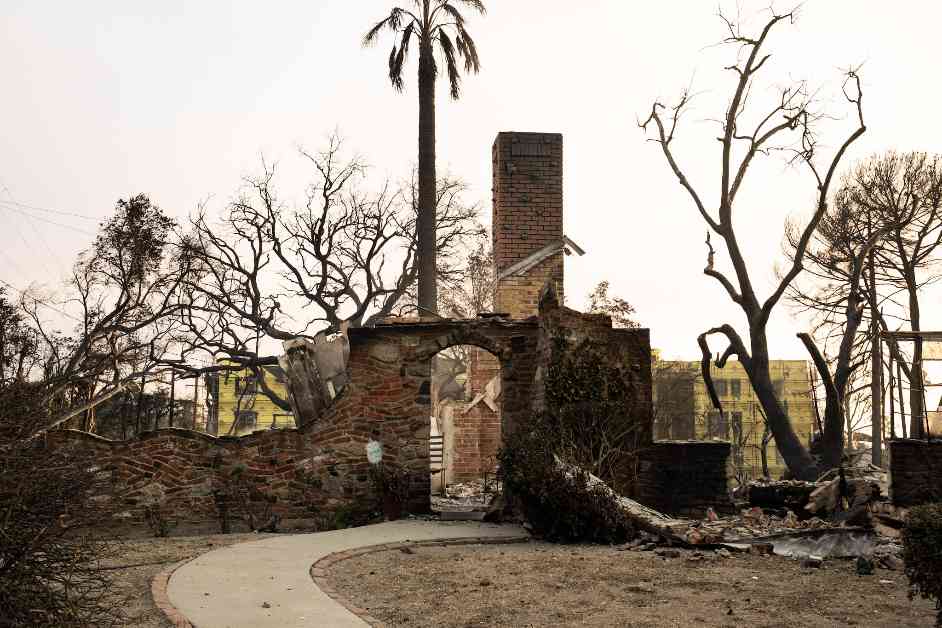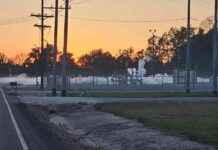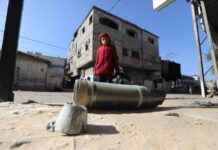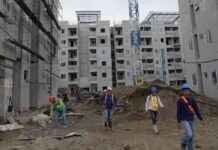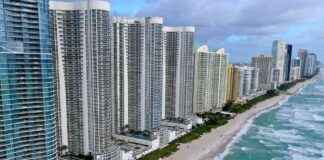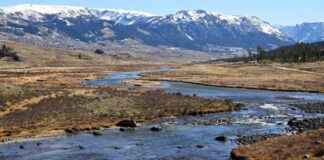**Urban Sprawl and Climate Change: Los Angeles in Flames**
As the sun set in the city of angels, Anthony Honore raced through the streets of his beloved Pasadena, trying to find his auntie amidst the chaos of the Eaton Fire. The flames, fueled by Santa Ana winds and bone-dry vegetation, had turned his childhood neighborhood into an inferno. Cars engulfed in fire lined the streets, creating a scene straight out of a movie.
In the midst of the devastation, Honore’s primary concern was the safety of his family. With a heart full of fear and determination, he managed to rescue his auntie, but his childhood home was not as fortunate. Like thousands of other Angelenos, Honore now faced the harsh reality of losing everything to the relentless blazes that had ravaged the city.
**The Unfolding Tragedy**
The Palisades Fire in Pacific Palisades and the Eaton Fire in Pasadena and Altadena had left a trail of destruction in their wake, consuming over 22,000 acres and 14,000 acres respectively. More than 7,000 structures had been swallowed by the flames, leaving a smoky horizon visible for miles across Los Angeles County. The once vibrant streets of Lake Avenue now lay in ruins, with abandoned cars and charred buildings serving as grim reminders of the disaster.
**Health Risks and Evacuations**
As the fires raged on, residents across Los Angeles faced heightened health risks due to worsened air quality. Rima Habre, a professor of environmental health, urged people to stay indoors, wear masks, and use air filters to protect themselves from the toxic smoke. The elderly, young children, and those with pre-existing conditions were particularly vulnerable to the adverse effects of the wildfire.
In addition to the air pollution, the wildfires had contaminated the water supply in Pasadena, prompting the city to issue a “do not drink tap water” advisory. Over 150,000 people were under mandatory evacuation orders, seeking refuge from the relentless flames that threatened their homes and lives.
**The Factors Behind the Inferno**
The intensity and speed of the fires were exacerbated by a combination of factors, including the unusually dry weather and strong Santa Ana winds. The lack of rainfall in the preceding months had created drought conditions, making it difficult for firefighters to battle the flames. Helicopters and airplanes were grounded, forcing first responders to navigate the narrow roads of Malibu and Eaton Canyon on foot.
The urban sprawl of Los Angeles, with homes built close to forested areas, provided ample fuel for the fires to spread rapidly. Climate change further exacerbated the situation, with experts warning of an increase in extreme weather events that would continue to challenge communities across the region.
**A Call for Resilience and Adaptation**
In the face of such devastation, experts like fire ecologist Jennifer Balch and geographer Stephen LaDochy called for a reimagining of fire-resilient communities in Southern California. The ever-expanding urban sprawl and housing shortage had put many residents at risk, with homes built in fire-prone landscapes.
Urban planning expert Stephanie Pincetl emphasized the need for more sustainable solutions to prevent future disasters. Controlled burning and densification were proposed as potential strategies to mitigate the impact of wildfires in the region. The urgent need for adaptation and resilience in the face of climate change was underscored by the tragic events unfolding in Los Angeles.
**A Story of Resilience Amidst Tragedy**
Amidst the devastation, stories of resilience and community support emerged. Anthony Honore, despite losing his childhood home, remained upbeat and continued to support his neighbors in need. The spirit of unity and compassion shone through as people came together to help those affected by the fires, offering food, water, and shelter to those in need.
As the flames continued to rage across Los Angeles, the city faced a reckoning with its past and future. The challenges posed by climate change and urban sprawl necessitated a collective effort to build more resilient, sustainable communities that could withstand the growing threat of wildfires in the region.

